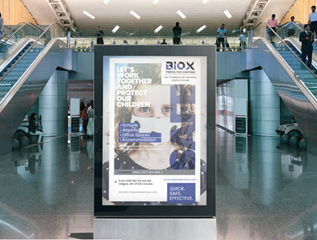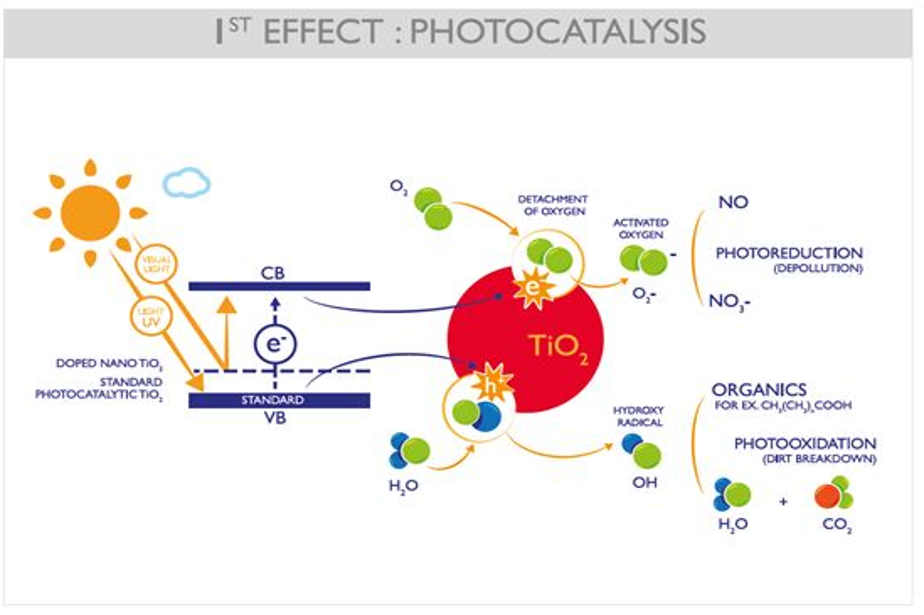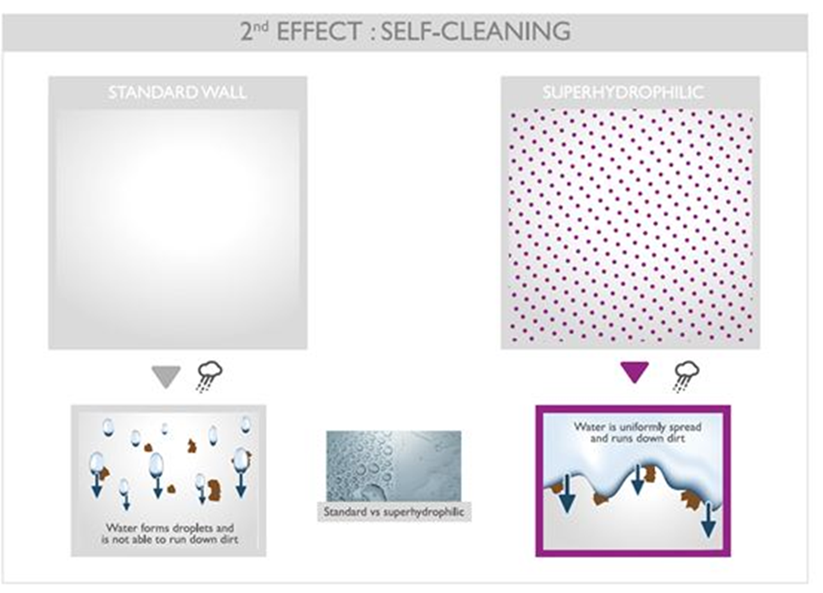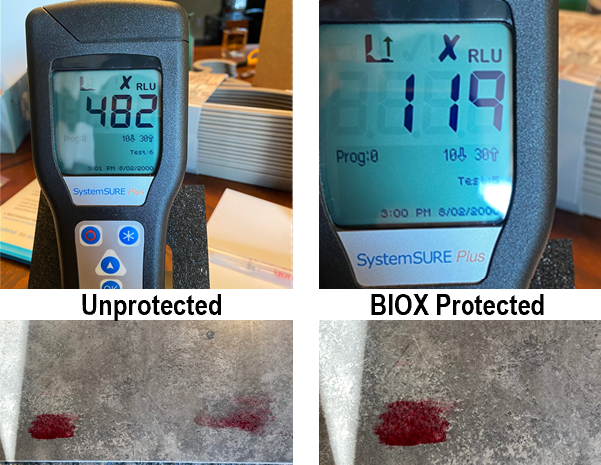

1 (877) 259-6586
An Introduction To..
Safeguarding your spaces!
- BIOX is a self-cleaning, light-activated nano titanium dioxide coating that breaks down organic material through oxidation. This nano particle technology enables a lasting cleansing and protective effect and prevents biological material build up.
- Application surfaces: metal, glass, plastic, lumber, and fabric
BIOX Characteristics:
- Self-cleaning
- Air-Purifying
- Improves Cleanliness
- Long-lasting effects

•Light-Activated Reaction
•The photocatalytic oxidation function of BIOX uses a very minimal amount of natural or visible light to oxidate organic matter that may be present
•Self-cleaning Coating
•Hydrophilic characteristic •Very active free radicals constantly being produced by chemical reaction •Nano particles that promotes greater surface area and larger number of particles available for the chemical reaction to occur
BIOX Activities
Light Activated Reaction

Self-Cleaning

BIOX
Bacterial log reduction tests
| Strain | Method | Verification | Reduction Efficiency |
|---|---|---|---|
| Salmonella Typhimurium | ISO 20743:2013 | Third party testing and verification, inoculated, specific to ISO | 99.999% |
| Escherichia Coli | JIS L 1902:2008 | Third party testing and verification | 99.9999% |
| Legionella Pneumophila | JIS L 1902:2008 | Third party testing and verification | 99.999% |
| Listeria monocytogenes | JIS L 1902:2008 | Third party testing and verification | 99.999% |

BIOX In Action
ATP LUMINOMETER
- BIOX uses an ATP luminometer to test the relative biological activity on surfaces before and after application.
- This testing is used in food, brewing, agriculture and cleaning to determine if a product or surface is free of biology.
- ATP is fuel storage for all biology. The luminometer measures the concentration of the ATP in relative light units (RLU). Surfaces below 10 RLU are considered free of biology, surfaces under 100 RLU are considered disinfected

Test on ceramic tile
- Half of a new ceramic tile was treated with BIOX protective coating, the remaining half was uncoated.
- The tile was tested for visual indication of photocatalytic oxidation. Red food dye was added to each side of the tile. On the untreated side the color did not fade, and on the treated side almost completely faded, showing the process in action.
- The tile was left in a common gathering area uncovered, with artificial light. After 1 day, each side of the tile was tested with the Hygiena ATP meter. The results were 482 RLU for the untreated and 119 RLU for the treated.
Case Study: High School
- 250 Student
- 20 Classrooms
- All door handles
- All high traffic contact surfaces
- Workout facility
- Teacher’s lounge
- Application time: 2 days
- Cost: $4,500.00
- Duration: 4,000 hours surface protection


![]() A member of the International Sanitary Supply Association – Canada
A member of the International Sanitary Supply Association – Canada
